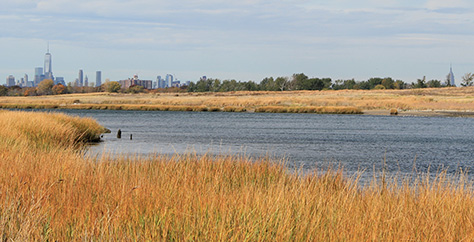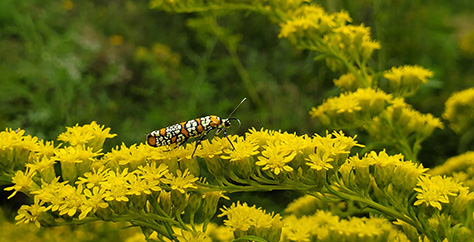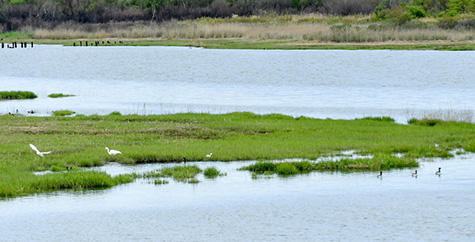Grasslands in New York City Parks

Maritime grassland at Marine Park, Brooklyn
Grasslands are actually relatively rare in New York City. Unlike a typical lawn with just one type of grass, a grassland is a type of ecosystem with a dynamic mix of many different types of grass, wildflowers, and other non-woody plants — like a meadow! There are few bushes and trees, if any.
Because grasslands were fertile ground for agriculture and easy to build on, most of the grasslands in the area now defined as New York City were transformed into farms and other developments. In New York City today, our largest grasslands are located in Brooklyn and Staten Island and are actually man-made — they are salt marshes that were filled in to be used as landfills or airfields and have since been re-seeded as grasslands.
Types of Grasslands
Not all grasslands are alike! They differ based on how and where they grow. In New York City, there are many types of grasslands, including these two special types:
Maritime Grassland
Naturally found on rolling plains adjacent to the ocean, maritime grasslands are dominated by perennial grasses, such as little bluestem, common hairgrass, and poverty-grass. Because of wind and salt spray, any shrubs present tend to be short. There are now parks in the city that contain representative maritime grassland communities, including Marine Park in Brooklyn and Ocean Breeze Park in Staten Island.
Serpentine Barrens
This fascinating ecosystem is found in only a few places on Earth and in New York it's only on Staten Island! That's because the rare serpentine bedrock from which it gets its name doesn't exist elsewhere in NYC. As the bedrock weathered over millions of years, it created inhospitable soil for most plants and animals. Still, hardy species like yellow Indiangrass and little bluestem have found ways to prosper despite the challenges.
Benefits of Grasslands
Because of the variety of grasses and wildflowers found in grasslands, this ecosystem provides habitat for a diverse mix of wildlife, including many threatened and endangered animals and plants, while offering many benefits for humans, too!
Provide Habitat for Wildlife
You might think birds only nest in trees, but there are many species of birds, both migratory and year-round New Yorkers, that rely on grasslands to forage for food and to make their homes. Some species prefer short grass species, while others prefer tall grasses, so it's important that we grow healthy grasslands with a diverse mix of these grasses to help support our birds.
Grasslands in New York City are home to several species, including grasshopper sparrows, savannah sparrows, eastern meadowlarks, ring-necked pheasants, and valuable pollinators like monarch butterflies.
Absorb Carbon
Like most plants, grasses absorb carbon dioxide from the air to create energy as part of the photosynthesis process. The grass species in grasslands have very deep root systems that sequester lots of carbon. However, unlike trees, grasses won't return this carbon dioxide to the atmosphere when they die because the carbon dioxide is stored in roots below ground. The carbon underground also makes the soil healthier and better able to support plants and other critters that live in the soil.
Provide Recreation
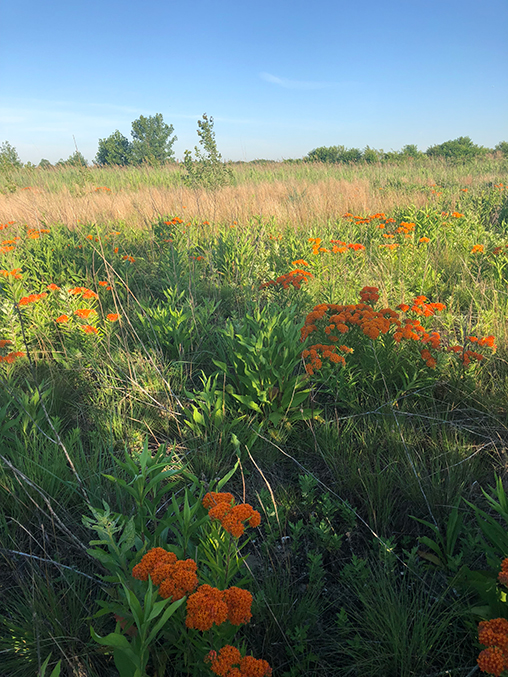
Butterfly weed, a food source for pollinators, grows on White Island, a grassland in Marine Park, Brooklyn.
Grasslands provide ample open space for low-impact recreational activities like walking, hiking, and birdwatching! Just be sure to stick to designated areas and paths to avoid trampling any vulnerable plants or animals living in the grassland.
Challenges Faced by NYC's Grasslands
As with any ecosystem, our grasslands experience challenges that we pay close attention to and address to help keep them thriving and providing the many benefits they offer. Some of those challenges include:
Succession
In natural ecosystems, over time, different plant species replace each other, shifting away from herbaceous species domination, like in grasslands, to woody species domination, like in forests. Our scientists keep an eye on any trees that spring up to ensure they don't dominate the native grasses.
Introduced Species
Our urban grasslands are vulnerable to problematic introduced plants, like common reed, Phragmites australis, and mugwort, Artemisia vulgaris, which can outcompete diverse native plant communities and degrade habitat for native birds and other wildlife.
How We Care for Grasslands
Mowing
For grasslands to thrive, they need to experience some sort of disturbance that rids them of excess thatch or leaf litter and prevents woody species from gaining a foothold. The Lenape and other indigenous peoples in our region cared for grasslands using fire; in this way, grasslands in our region are different from midwestern prairie grasslands that were maintained historically by grazing bison. Instead of fire or grazing, we use a mowing strategy to care for our grasslands. Mowing is done with specialized equipment and precisely timed to avoid harming nesting birds and hibernating pollinators. If breeding birds have been observed at a site, our staff will monitor the site to ensure all fledglings have left the nest before mowing.
Seedling Removal
While in forests, planting and caring for trees is critical, trees in grasslands negatively impact the native grasses and wildlife that live there. For grassland birds, for example, every full-sized tree that grows in the middle of the open grassland is a possible perch for a predator. To prevent this from happening, we work to remove small trees from our grasslands.
Introduced Species Management
Our staff and volunteers work throughout the year to remove overabundant introduced species, like Phragmites and mugwort. In addition to removing unwanted plants, our staff use expertly crafted native species planting palettes to plant seed mixes for native grass species that are best suited to thrive in grasslands and support the wildlife that depends on this ecosystem.
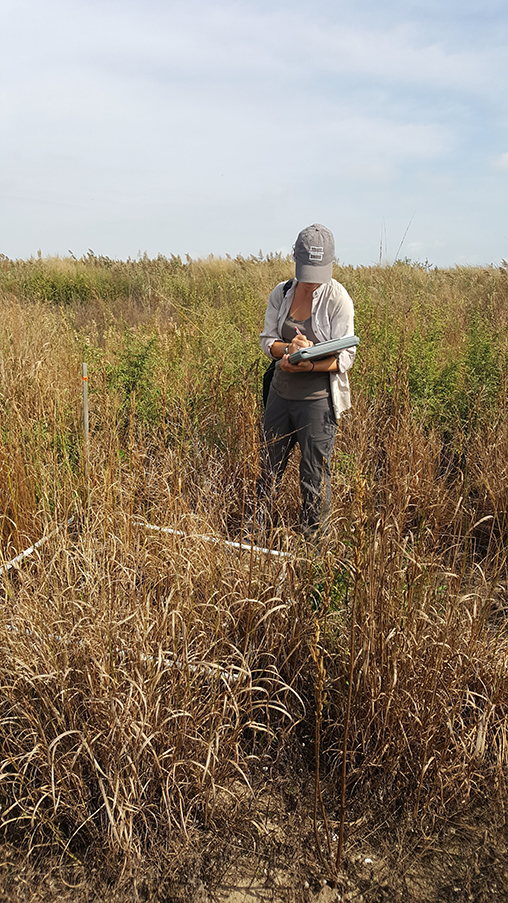
NYC Parks teams up with partners and friends, like the Natural Areas Conservancy, to survey and preserve grasslands across New York City.
How to Help
Want to help us care for grasslands and meadows in NYC? Join an upcoming stewardship project or become a Super Steward!
Explore New York City's Grasslands and Other Ecosystems
New York City is more than skyscrapers and trees. Discover acres of grasslands tucked away in our parks.
Exploring White Island
Learn how we transformed a landfill into a beautiful grassland in Brooklyn's largest park.
Watch: Oakland Lake Wildflower Meadow
Discover a pollinator paradise in Queens maintained by volunteers and our horticulture staff.
Ecosystems in New York City
Along with grasslands, forests and wetlands play an essential role in the biodiversity and resilience of our city.

